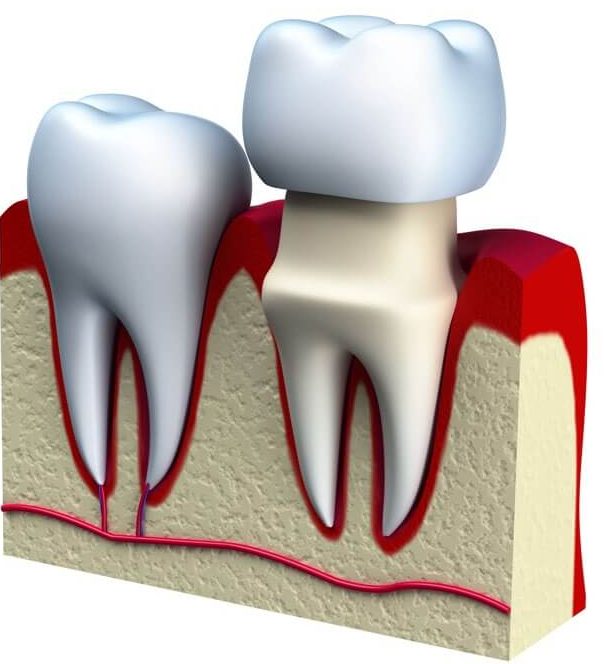Crown Lengthening Gone Wrong

Crown lengthening is a surgical procedure designed to reshape the gum tissue and bone around a tooth, typically to expose more of the tooth structure for aesthetic or functional purposes, such as preparing the tooth for a dental restoration like a crown. While crown lengthening can be an effective and beneficial procedure when performed correctly, there are instances where it can go wrong, leading to a range of complications and dissatisfaction for the patient. Understanding the potential risks and what can go wrong is crucial for managing expectations and making informed decisions about dental care.
Misjudging the Amount of Tissue to Remove
One of the primary challenges in crown lengthening is determining the precise amount of gum tissue and bone that needs to be removed. This requires a deep understanding of the patient’s anatomy, the proportions of their teeth and gums, and the desired aesthetic outcome. If too little tissue is removed, the procedure may not achieve its intended goal, leaving the tooth still somewhat obscured. Conversely, removing too much tissue can lead to an uneven gum line, exposed roots, and significant aesthetic issues.
Insufficient Healing Time
The success of crown lengthening also depends on the body’s ability to heal properly after the surgery. If the patient does not allow sufficient time for healing or disregards post-operative instructions, it can lead to complications such as infection, delayed healing, or the formation of scar tissue, which may affect the outcome of the procedure.
Inadequate Dental Restoration
Following crown lengthening, the next step is often the placement of a dental crown or other restoration. If the restoration is not properly fitted or if its design does not complement the new gum line, it can lead to further complications, including ongoing sensitivity, poor aesthetics, or even the need for additional corrective surgeries.
Nerve Damage
As with any surgical procedure, there is a risk of nerve damage during crown lengthening. This can result in numbness, tingling, or pain in the gums, tooth, or surrounding areas. While nerve damage is often temporary, in some cases, it can be permanent, significantly impacting the patient’s quality of life.
Aesthetic Dissatisfaction
Given that crown lengthening is often performed for aesthetic reasons, one of the most significant risks is not achieving the desired aesthetic outcome. Factors such as uneven gum contours, overly aggressive tissue removal, or poor restoration design can lead to dissatisfaction with the appearance of the smile.
Technical Challenges and Limitations
Sometimes, despite the best planning and execution, technical challenges or anatomical limitations can hinder the success of crown lengthening. For instance, the bone structure may not support the desired changes, or there may be underlying health issues that affect healing and tissue regeneration.
Choosing the Right Professional
The outcome of a crown lengthening procedure is heavily dependent on the skill, experience, and judgment of the dental professional performing it. Choosing a qualified periodontist or oral surgeon with extensive experience in crown lengthening procedures can significantly minimize the risk of complications and ensure the best possible outcome.
Prevention and Mitigation
While there are risks associated with crown lengthening, many complications can be prevented or mitigated through careful planning, precise execution, and adherence to post-operative care instructions. It’s also crucial for patients to have realistic expectations and to understand that, as with any surgical procedure, there are inherent risks involved.
Solutions and Alternatives
For patients who have experienced complications from crown lengthening or are seeking alternative solutions, several options may be available. These can include revisiting the procedure with a more experienced practitioner, exploring alternative treatments such as orthodontic tooth movement, or focusing on restorative solutions that do not require surgical alteration of the gum and bone structure.
Conclusion
Crown lengthening, when performed correctly, can significantly enhance the aesthetic appeal and functional capabilities of a patient’s smile. However, as with any surgical procedure, there are risks and potential complications. By understanding these risks, carefully selecting a qualified dental professional, and maintaining realistic expectations, patients can make informed decisions about their dental care and minimize the likelihood of undesirable outcomes.
What are the main reasons crown lengthening procedures can go wrong?
+The main reasons include misjudging the amount of tissue to remove, insufficient healing time, inadequate dental restoration, nerve damage, aesthetic dissatisfaction, and technical challenges or limitations.
How can patients minimize the risk of complications from crown lengthening?
+Patients can minimize risks by choosing a highly qualified dental professional, following post-operative instructions carefully, and having realistic expectations about the procedure’s outcomes.
What alternatives are available for patients who have experienced complications or are not candidates for crown lengthening?
+Alternatives can include orthodontic treatments, restorative dentistry solutions that do not require surgical alteration, or revisiting the procedure with a more experienced practitioner for a revised approach.


